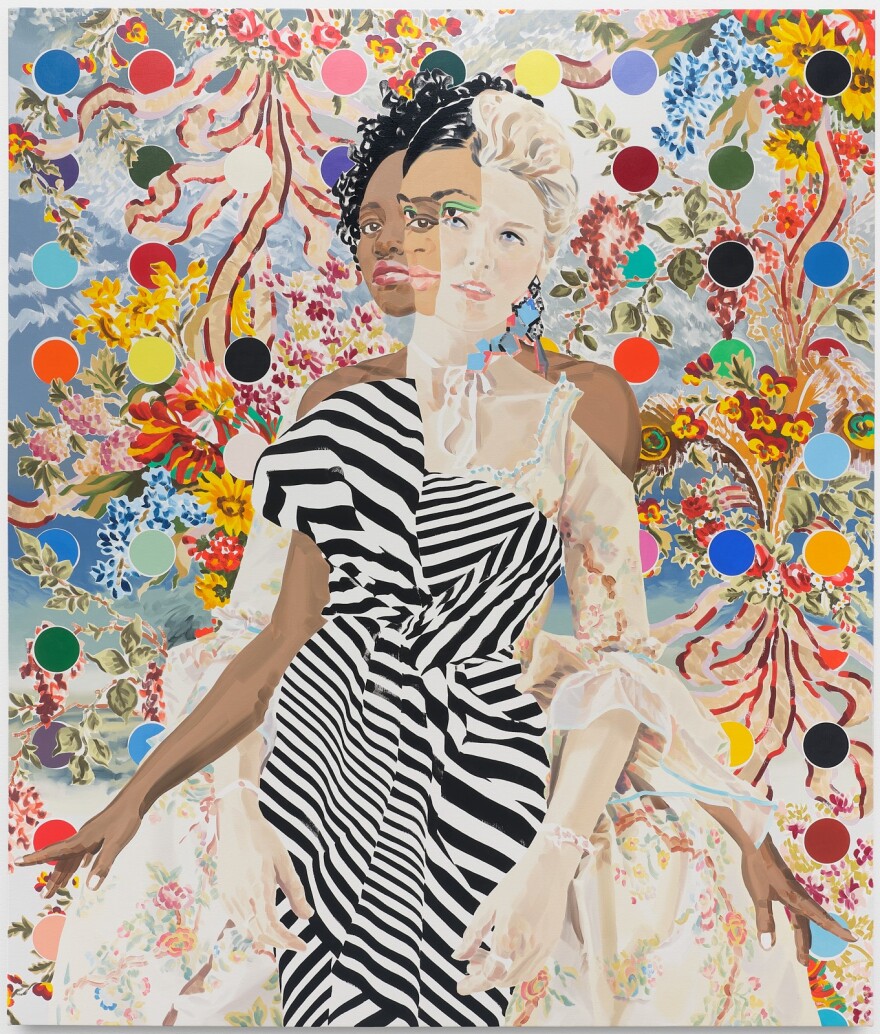Women Painting Women, the new show at the Modern Art Museum of Fort Worth, surveys 50 years of work by female artists — and how women have been represented on canvas. The Modern's chief curator, Andrea Karnes, spoke with KERA's Jerome Weeks.
You've said you were inspired to create Women Painting Women by the now-classic feminist essay by Linda Nochlin, it came out in 1971, called Why Have There Been No Great Female Artists?
Explain.
I'd read a little blurb somewhere that, you know, 2021 would be the 50th anniversary. And it prompted me to re-read the essay. And when I did, well, I wanted to see, y'know — just like take the temperature, like, how have things changed?
Or how have they stayed the same?

How have they?
I mean, even with 46 painters here, you're still looking at a small sample, statistically. So you didn't want to make any grand statements about all female artists. But along the way, there must've been things you found.
What I did find, on a positive note, is much more inclusion when it comes to portrayals of women. So I wanted to be international and very inclusive of all types of portrayals of women -- meaning diversity in the imagery and also diversity with the artists.
I said this was a small sample. But with 46 female painters, that's actually a lot to take in — for a single show. The artists range from Amy Sherald, who painted the official White House portrait of Michelle Obama, to Alice Neel. Way back in the '60s, Neel was creating unblinking portraits of nude, pregnant women.
That's quite a range right there.
I think that there is every shade of what it means to be a woman in the exhibition. And a lot of the images are very psychologically moody. Some feel very personal. Some are eroticized.
And I think that just proves that the doors are wide open now for what representation of women can look like.

Speaking of representation, I asked the San Francisco artist Christiane Lyons, who has a painting in the show, about her process — because she creates these paintings that have overlapped images of multiple women in stylish outfits or settings.
Christiane Lyons: I do Google searches. I type in specific words that describe women or how women have been portrayed -- like 'portrait,' 'model,' 'lying down' [laughs]. And I see what pops up because I want to use what people are currently looking at. And then I change them.
Andrea Karnes: I think that Christiane is a great example of someone who works within the stereotypes in fashion magazines, in film, on social media. But when she combines three women into one, it becomes this very powerful image. She's taking the power back.
So back to Nochlin's essay, Why Have There Been No Great Female Artists? She examines the traditional barriers — personal, professional, educational — that, for centuries, kept women from pursuing lives as artists.
So in response to that, I could see gathering a wide range of current female artists. But you concentrated in particular on just female artists painting women. Why?

Painting in particular has been such a privileged medium throughout art history, mostly reserved for white men. So to take a look at what women can do with paint and how women as makers represent women as subjects seemed like the best way to see what progress looks like or doesn't look like. Photography, performance, video, other mediums have had more of a balance, whereas painting has been more privileged for white men.
Also, I think, to look at how women see women vs. the male gaze. So some women use the language, for example, of very sexy, erotic women. But it's like using that language to make a point about how women have been objectified. And some use the kinds of bodies and the colors of bodies that have been omitted from art history.
This show was actually delayed a year because of COVID. But now, with these portraits of women's bodies, it's hard not to see Women Painting Women in light of the uproar over the leaked Supreme Court draft opinion on Roe v. Wade. The show feels almost like a response about control of the female body.
Well, I think it's a beautiful moment to look at the works in the exhibition as a response, and I think there are multiple responses. For me, you know, starting with the women's movements of the 1960s and the civil rights movement seemed like a great place to begin.
So what comes through is the struggles that women have been through for the last 50 years. And the way they've responded to those struggles and the way that women have persevered and wanted to take the power back into their own hands.
This interview was edited for brevity and clarity.
Got a tip? Email Jerome Weeks at jweeks@kera.org. You can follow him on Twitter @dazeandweex.
Art&Seek is made possible through the generosity of our members. If you find this reporting valuable, consider making a tax-deductible gift today. Thank you.



